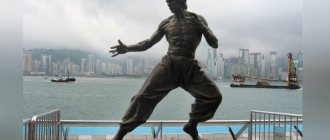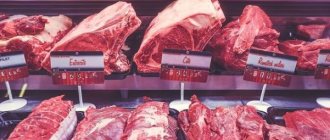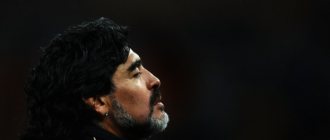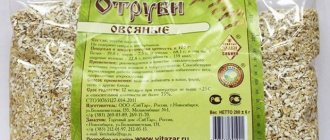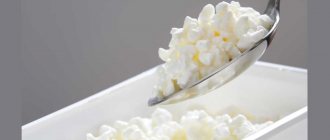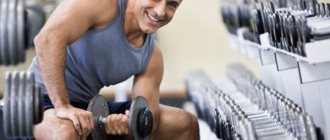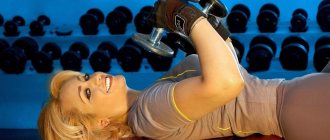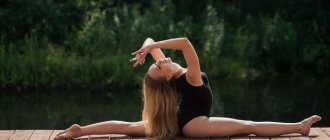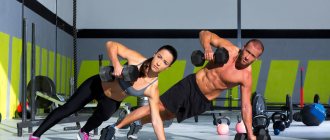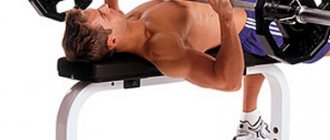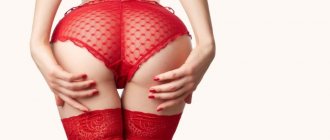Balanced diet
According to Linda and others I spoke with, Bruce Lee's view of nutrition was no different from that held by most reputable nutritionists: a well-balanced diet is the foundation of good, nutritious nutrition. I won't go into too much detail about what exactly a well-balanced diet is, since that's beyond the scope of this book, but instead I'll point out what Lee meant by a well-balanced diet, that is, what foods he preferred for sufficient saturation of the body with proteins, carbohydrates and fats.
Systems approach
For Bruce, the main goal was not the formation of muscle mass as such, but the strengthening of the body and all its subsystems for the sake of health and good shape. Muscles, he said, come from functional training, and the fact that they look impressive is a side effect.
Conversely, muscles that are pumped up solely for appearance are rarely functional.
The athlete's arsenal included all the components of fitness - training to develop speed, endurance, strength, flexibility, coordination, sense of rhythm and time, sensitivity. “Physical form is not permanent or unchangeable,” Bruce said. “This is nothing more than a specific adaptation of the body to your lifestyle.”
In other words, you are trained to do the activity that is required of you, and nothing more.
But it is possible to change the shape. Muscles can be strengthened by strength training. The heart can work more efficiently through endurance exercise, and joint mobility can be improved with a well-thought-out flexibility program. But if you decide to improve in any of these areas, you will have to follow the principle of overload, changing your daily habits and adding more and more new exercises!
Carbohydrates
Starches and sugars are carbohydrates. They received this name due to their chemical structure, as they consist of carbon, hydrogen and oxygen. During the digestion of food, starches are converted into sugars, so that ultimately all carbohydrates enter the bloodstream as sugars.
In the body, this sugar slowly burns or combines with oxygen (entered into the lungs with air). As a result of this oxidation, energy is produced that the body needs for its own internal processes and muscle activity. Starch-rich foods include all grains (wheat, oats, barley, rice and rye), breakfast cereals, breads, cakes, pasta and spaghetti. Beans, peas and potatoes can also be good sources of starch. Foods rich in sugar include molasses, honey, dried fruits (dates, figs, raisins), jelly, chocolate and table sugar. Fresh fruits can also be a good source of sugar. To produce the energy the body needs, foods containing starches are healthier than those containing sugar. Concentrated sugars (honey, jam, jelly, chocolate and sweet desserts) irritate the lining of the digestive tract and tend to ferment, which causes the formation of gas in the stomach and intestines, and their sweet taste destroys the appetite necessary for eating wholesome and nutritious food. Starchy foods, on the other hand, can be taken in relatively small quantities without causing any digestive problems: they do not irritate the digestive tract, are not usually prone to fermentation, and their mild taste does not negatively affect the appetite. However, refined cereals, white bread, polished rice, flour, pasta, spaghetti and all confectionery products that use white (refined) sugar in their production are much less healthy, as they lack important nutritional elements, and are more expensive.
Martial Arts Star Muscle Mass
To gain muscle mass, Lee drank 2 protein shakes a day. He mixed shakes with high-calorie foods like powdered milk and peanut butter, and also ate lots of nutritious vegetables.
He knew that sweet cocktails with sugar would not give any positive effect, so he mixed cocktails with wheat germ (or wheat germ oil), raw eggs, brewer's yeast (to increase the amount of vitamin B in the body) and bananas. I prepared natural juices using spinach, parsley and carrots. I didn’t disdain inositol (vitamin B8) and lecithin.
Fats
Like carbohydrates, fats provide the body with energy. In terms of energy intensity, they are the most valuable of all food products. Since the feeling of hunger is caused by contractions of an empty stomach, and fats leave the stomach slowly, the presence of the required amount of fat in food eliminates the feeling of hunger between meals. On the other hand, large amounts of fat can lead to digestive discomfort.
Fats are part of every cell in the human body. Thin membranes of fat protect the nerves, internal organs are partially supported in their position by fat, and a thin layer of fat under the skin smoothes the contours of the body and serves as an insulator, protecting the body from heat loss in cold weather. Some fatty acids are essential for life and are found in olive oil, corn oil, peanut oil, fish oil and egg yolks. The most valuable sources of fat are those that also contain important minerals and nutritional hormones. These include butter, cheese, cream, egg yolks, fish oil, avocado, almonds, walnuts, pecans, American nuts, peanuts, peanut butter and fatty fish (salmon, mackerel, herring, sardines and tuna).
Example of a daily diet
Bruce would start with a bowl of uncooked grain porridge, followed by nuts and dried fruit. At noon ~ a moderate lunch, and later - dinner. Linda recalls that she often cooked spaghetti or some other pasta for dinner, usually with a side dish of green salad, but in general the family preferred a meal of rice, vegetables, meat, chicken and seafood. “We didn’t eat a lot of meat,” she says, “and Bruce, of course, generally preferred Chinese and Asian food because he liked the variety and the proportions of meat and vegetables. Vegetables often predominate over meat in the Asian diet.”
Lee found Western food "monotonous" because it was often limited to one main dish, while Chinese food could consist of several - such as shrimp and vegetables, chicken and vegetables, beef in oyster sauce (as Bruce most preferred), as well as several salads. This variety of foods makes eating more balanced and enjoyable, allowing you to try a little of everything and not overload your body with a large amount of the same food. Lee considered this method of eating to be the most acceptable.
This, of course, does not mean that Lee completely rejected Western food and could not go to McDonald's from time to time for his own pleasure. “Bruce loved steak,” recalls Linda, “and for a while we had a special day of the week when we ate liver.” However, in general, Lee still preferred a more balanced direction of Asian cuisine, which, in his opinion, was based on a variety of foods and the correct ratio of proteins and carbohydrates. And the typical Western diet, Lee believed, has a high content of proteins and fats. Absolutely indifferent to all dairy products, which he used only to prepare his protein drinks, Lee very rarely drank milk and especially did not like cheese. As Linda recalls, “Bruce couldn’t understand why white people ate cheese.” Because of his busy schedule, Lee would often have snacks between meals, such as rice soup ("congi"), which Linda would prepare by boiling the rice until it had a gel-like consistency. Then liver, kidneys, brains or heart were added to it. Lee was also very fond of noodles, especially the Asian version, which are undoubtedly an excellent source of carbohydrates, so necessary for energy production.
Fully or partially limited products
To have a beautiful, muscular and strong body, a person needs a balanced, proper diet. The purpose of a sports diet is usually considered to be compensation and replenishment of vitality and energy spent during training - most often heavy and exhausting physical activity:
- no empty calories, you can afford an Easter cake or pie no more than once a year - to pay tribute to traditions and the owners of the house, but in everyday life the fuel we refuel with should be good, improving and normalizing the functioning of the body;
- give up fatty, smoked and canned foods;
- Dairy products were never a favorite of the Kung Fu master; he used powdered milk - not even whole milk - in his protein shake recipes.
Table of prohibited products
| Proteins, g | Fats, g | Carbohydrates, g | Calories, kcal | |
Vegetables and greens | ||||
| canned eggplants | 0,9 | 0,7 | 7,3 | 49 |
| fried potato | 2,8 | 9,5 | 23,4 | 192 |
| canned corn | 3,9 | 1,3 | 22,7 | 119 |
Snacks | ||||
| potato chips | 5,5 | 30,0 | 53,0 | 520 |
| apple chips | 2,2 | 0,1 | 59,0 | 253 |
| salted popcorn | 7,3 | 13,5 | 62,7 | 407 |
Flour and pasta | ||||
| pasta boiled with fat | 3,4 | 5,0 | 19,0 | 135 |
| ravioli | 15,5 | 8,0 | 29,7 | 245 |
| dumplings | 5,0 | 4,8 | 25,8 | 160 |
| pancakes | 6,3 | 7,3 | 51,4 | 294 |
Bakery products | ||||
| sliced loaf | 7,5 | 2,9 | 50,9 | 264 |
| bagels | 16,0 | 1,0 | 70,0 | 336 |
| high-calorie bun | 7,3 | 9,6 | 62,4 | 363 |
| pretzel | 8,2 | 3,1 | 69,3 | 338 |
| donuts | 5,8 | 3,9 | 41,9 | 215 |
| donut | 5,6 | 13,0 | 38,8 | 296 |
| tacos | 7,1 | 20,8 | 58,1 | 467 |
| Karelian bread | 7,5 | 1,2 | 37,0 | 220 |
| wheat bread | 8,1 | 1,0 | 48,8 | 242 |
Confectionery | ||||
| candy caramel | 0,0 | 0,1 | 96,2 | 362 |
| candies | 4,3 | 19,8 | 67,5 | 453 |
| cookie | 7,5 | 11,8 | 74,9 | 417 |
| gingerbread | 5,8 | 6,5 | 71,6 | 364 |
| dough | 7,9 | 1,4 | 50,6 | 234 |
Raw materials and seasonings | ||||
| ketchup | 1,8 | 1,0 | 22,2 | 93 |
| mayonnaise | 2,4 | 67,0 | 3,9 | 627 |
| sugar | 0,0 | 0,0 | 99,7 | 398 |
Meat products | ||||
| pork | 16,0 | 21,6 | 0,0 | 259 |
| salo | 2,4 | 89,0 | 0,0 | 797 |
Sausages | ||||
| boiled sausage | 13,7 | 22,8 | 0,0 | 260 |
| amateur smoked sausage | 17,3 | 39,0 | 0,0 | 420 |
| smoked sausage | 9,9 | 63,2 | 0,3 | 608 |
| sausages | 12,3 | 25,3 | 0,0 | 277 |
Fish and seafood | ||||
| hot smoked pink salmon | 23,2 | 7,6 | 0,0 | 161 |
| smoked capelin | 18,0 | 22,0 | 0,0 | 270 |
| canned saury | 17,5 | 2,0 | 0,0 | 88 |
| smoked mackerel | 20,7 | 15,5 | — | 221 |
| * data is per 100 g of product | ||||
Additional food
In addition to a balanced diet. Lee truly believed in the special value of supplementary nutrition. In particular, special protein drinks were an important element of Lee's daily diet. There was hardly a day in his life when he didn’t drink a glass or two of this high-protein cocktail. Once again, it was Linda's responsibility to formulate and prepare them: For protein, we used to go to Bob Hoffman's in Santa Monica... now you can buy it everywhere. In addition, powdered milk was added to Bruce's drinks because, as I read from Adele Davis, it is healthier because it is more concentrated. We used it either in addition to or instead of the proteins purchased at Hoffman's store.
The ingredients in Lee's protein drinks varied, but they always included several of the following: milk powder; water or juice; ice cubes; 2 eggs, sometimes with shell; 1 tablespoon of sprouted wheat or its oil; 1 tablespoon peanut butter; banana (containing carbohydrates and potassium) and/or other fruits for flavor; 1 tablespoon brewer's yeast; inocitol; lecithin (in granules).
Linda says that she never had a specific recipe for making these drinks, and now, after more than twenty-five years, she can hardly remember the exact proportions. However, she is absolutely sure that, depending on the training load and his own weight, Lee necessarily drank such drinks once - and more often twice - a day. Bruce Lee himself left instructions for using protein drinks to gain weight: “Add regular and dry milk to peanuts, eggs (with shells) and bananas and mix in a mixer. If you need quick results, use beer instead of regular milk.”
Please note that Lee's recipe above is only for those who need to gain weight quickly. For these purposes, beer is much preferable to regular milk. For reference, I will say that Lee himself never drank beer.
In addition to protein drinks, Lee regularly took balanced portions of vitamins and minerals. Bruce and Linda often visited Lindberg's grocery store in Santa Monica and purchased special vitamin and mineral supplements (usually consisting of seven tablets, which together represented a balanced selection of different vitamins and minerals). In 1971, when Lee was filming his first Chinese-language film, The Big Boss, in Pakchong, Thailand, he often complained in letters home about the lack of proper food. “The food in Bangkok is disgusting,” he wrote, “and in Pak Chong it’s even worse. There is absolutely no beef here, almost no chicken or pork. I'm so glad I took my vitamins with me!” Lee, who always made sure to take a balanced amount of vitamins and minerals every day, especially preferred vitamin C, which increased the proportion of his diet sharply when he felt that the body's resistance was weakening due to fatigue or stress.
An example of Bruce Lee's supplementary nutrition Energizer "67" (200 tablets). Lecithin granules. Vitamin C. Natural vitamin E. Natural protein. Rose hips (liquid). Wheat germ oil. Natural protein tablets (chocolate). Acerola-S (250). B-folia (180). B-folia (360). — A-Veg (500). E-Plex (250).
General rules
Bruce Lee's training and nutrition were so unique and effective that many modern athletes dream of repeating their success. The secrets of perfecting the body of a great fighter are still being researched and learned, but it all comes down to a few simple truths:
- Bruce Lee's diet consists only of natural products that are really necessary for health: the constant presence of complete protein, cereals, a variety of fresh vegetable dishes and assorted fruits;
- minimizing fatty foods, the Chinese martial artist was surprised why in Western cooking they prefer steaks, fried and fatty foods and at the same time forget about the benefits of cereals and vegetables;
- eat frequently, in small portions - 4 times a day, plus fruits, vegetables and protein snacks, it is important to achieve such regular food consumption and not overeat, so as not to feel hungry and not store extra calories;
- supplementing the menu with various multivitamin complexes and dietary supplements - the actor very often consumed vitamin C, bee pollen, acerola fruits, rose hip syrup, honey, royal jelly, ginseng, etc.
Electric juicer
Paying attention to his diet, Lee quickly discovered the benefits of an electric juicer. Due to his high physical activity, the main fuel involved in his metabolism was carbohydrates, and the most carbohydrate-rich foods - when considered from the point of view of vitamins and minerals - in addition to easily digestible (naturally occurring) starches and sugars are fruits and vegetables. Among all the variety of fruits, Lee considered mixtures of carrots, celery and apples to be the most useful for maintaining the required energy level. Let's turn again to Linda for information on this issue; We had a juicer long before they became popular, and we used it to make carrot juice, vegetable juice, fruit juice. If. One day Bruce didn't drink two protein drinks, then he drank one protein drink and one fruit juice. Probably one of our favorite drinks was the one we. made mainly from carrots. Carrots made up the bulk of the drink, with a smaller share given to apples. And then I added a little more celery. We often threw in a few sprigs of parsley, because parsley is very nutritious, but you shouldn’t add a lot of it, since it has a very specific taste, so just a little bit will be enough. So, if you want to recreate our, say, carrot-apple-celery smoothie, then half of it should be carrot juice, a third apple juice, and the rest celery and parsley... but of course, it all depends on your personal preferences.
Lee also drank fresh fruit and vegetable juices, which he usually mixed with carrot juice to add sweetness. Juice from fresh vegetables and fruits is a rich source of vitamins, minerals and enzymes. During the day, the baby is not able to eat enough raw vegetables and fruits to saturate the body. Nowadays, people especially need additional nutrients that would help the body get rid of toxins that have entered it from the environment. In most cases, you won't have enough time to eat five pounds of carrots, but you can easily find it to take the equivalent in the form of a nutritious and delicious juice.
This convenient form of supplemental nutrition did not disappear with Lee's death. The use of electric juicers has become popular and ubiquitous ~ and for the same reasons that prompted Lee to plug in his new purchase more than twenty-five years ago. This conclusion can be drawn from the book Juice in People's Lives by Cheri Kalbom and Maureen Keene (Garden City Park, New York: Avery, 1992):
Juices allow the body to quickly absorb many valuable nutrients found in food. Enzymes are organic catalysts that increase the rate at which food is broken down and absorbed by the body. Raw fruits and vegetables are rich in enzymes, but they are destroyed when cooked. For this reason, raw plant foods should make up at least half of your daily diet. Fast and easy digestion of food, facilitated by enzymes, will give your body more energy and health.
What is wing chun
In the films where Bruce Lee starred, you can see very rare footage of the “inch blow”. This is a special technique of brush behavior. A person strikes with his fingers from a short distance, putting into it the strength of all possible muscles. With this technique, with minimal effort and little physical contact, you can throw your opponent several meters to the side.
Bruce Lee practiced the "inch punch" all his life. The technique of fighting comes down to the fact that each subsequent attack follows from the previous one, and the distance to the enemy is gradually reduced. It is necessary to put weight into the blow and “reduce force”, so it will not be possible to perform it correctly without coordinated muscle work. Perfecting the “inch punch” takes time. It’s easy to quickly grasp the basics, but without practice you won’t be able to learn how to conquer an enemy from a short distance.
Honey and ginseng
Another carbohydrate-containing drink (although the quantity is so small that calling it a “drink” is a stretch) that helped Lee maintain her energy levels was Royal Jelly, a mixture made by her. according to rumors, from honey and jelly of queen bees. (The mixture comes in tiny glass ampoules, the top of which must be cut off with a special abrasive knife included in the kit.) Kareem Abdul-Jabbar recalls that Lee often opened one of these ampoules and drank its contents during the filming of the film “A Game Called Death.” According to Herb Jackson, Lee once told him: “When I need to demonstrate my abilities, I will take a sip of Royal Jelly beforehand and - presto! I’m just bursting with energy.” According to Linda, Bruce truly believed that Royal Jelly and ginseng replenished energy reserves and increased overall activity levels. He greatly valued and respected the experience of more than four thousand years of Chinese experimentation with medicinal herbs and teas and often said that if something was so effective for so many people over several thousand years, then it was truly valuable and beneficial to health.
Bruce Lee workouts
The man is a great martial artist, and here we discuss training in bodybuilding, fitness, powerlifting and occasionally about martial arts.
Reading all kinds of literature, the secrets of Bruce Lee's training are as follows:
- Run
- Sparring
- Alternation of training
- Perpetual motion machine
- Discipline
This is what I found in the wilds of the World Wide Web. Let's take a closer look at each point.
Bruce Lee spent a lot of time running. Justifying this by the fact that if a person cannot withstand such a load (running), then he has nothing to catch in sports. He himself ran about 6 times a week, for a quarter of an hour.
Love for tea
Bruce Lee never drank coffee, mainly because he didn't like the taste, but he remained a devoted tea drinker throughout his life. According to Linda's recollections, Bruce especially loved tea with honey. When he was working, particularly filming in Hong Kong, Linda would make him a large thermos of honey tea so he could take a few sips between takes. She says, “I would take a bag of Lipton and brew it stronger. Then she stirred a tablespoon of honey into it. Bruce really liked its taste, and we drank this tea almost always.” Another of Lee's preferred types of tea is called lai cha in Chinese. which in literary translation means “milk tea”. Lee and Linda often drank this drink in the morning, especially after moving to Hong Kong and 1971. Linda remembers Bu Ngan with a smile. Lee's close friend throughout his life and almost constant stunt double on the set, who lived with Lee's family in Hong Kong, cooked lai cha for her and Bruce every morning, and one day she asked him what this famous a variety of Chinese tea. Bu Ngan looked at her in surprise and replied; “From Lipton, of course!” Real “la-tea” is prepared from black tea, which is allowed to steep until it reaches the required strength. Then milk and sugar are added to it, and it tastes very similar to English tea.
Of course, Lee was by no means limited to honey tea and lai cha. According to Linda, “There are hundreds of types of Chinese tea, and Bruce loved them all.” When Lee worked on film sets, friends and employees often treated him to various types of tea, he especially liked tea with chrysanthemums. In addition to its pleasant taste, Lee valued tea for its healing qualities and its benefits for the entire body as a whole.
Having briefly touched on Lee's Balanced Diet, let's take a closer look at its specific application through one typical day.
Exit to superpower
Bruce Lee's favorite endurance activity was interval training. The principle is simple: intense work is replaced by relaxation, then intense work again and relaxation again. For example, you need to run one and a half kilometers: you run 400 meters, trying to do it in a minute, then take a break, say 5 minutes of jogging, then again 400 meters at a good pace and slow down for 5 minutes, and so on. After all intervals, be sure to breathe deeply and deeply.
Combine cardio, strength training and flexibility exercises in one complex. Circuit training is usually five or six different exercises, each working a different part of the body. The basic principle is to never load the same muscle group twice during the same session.
